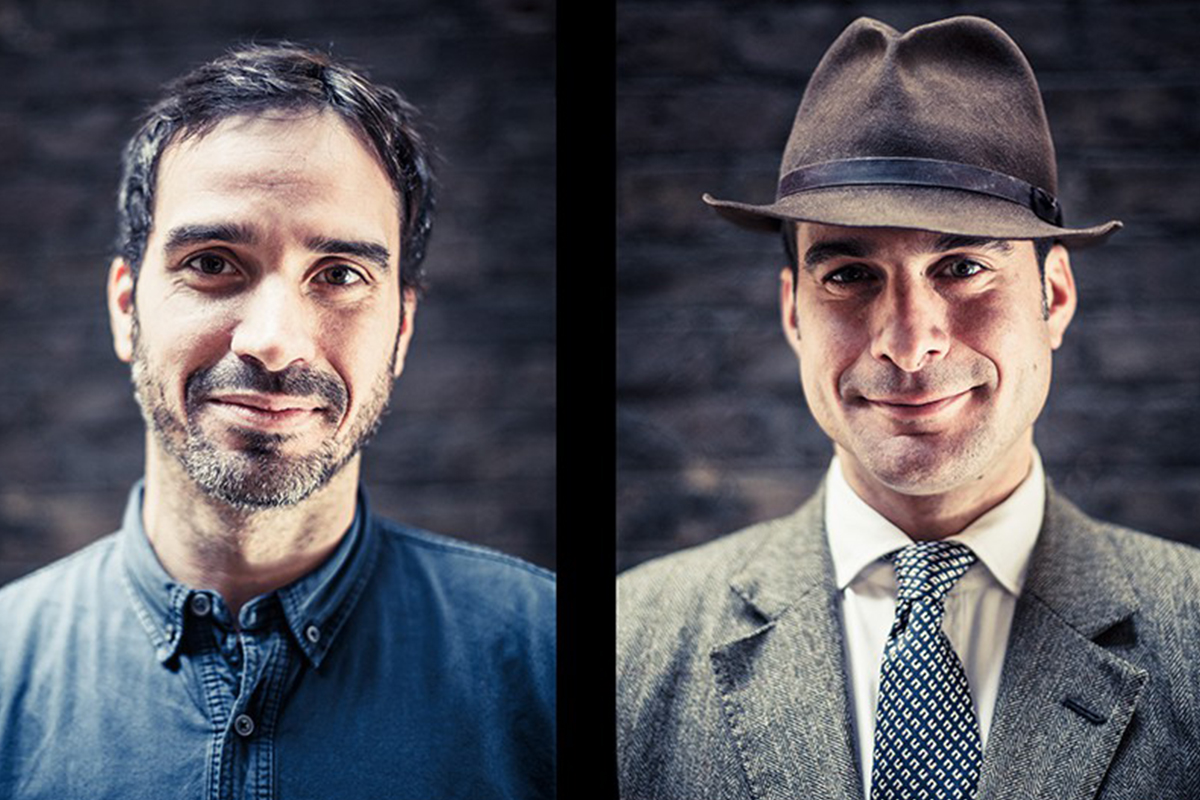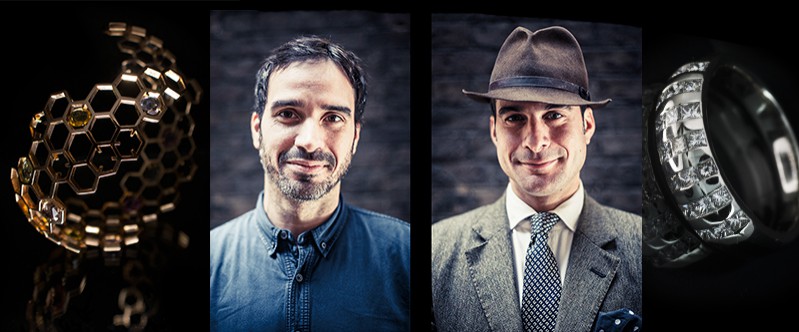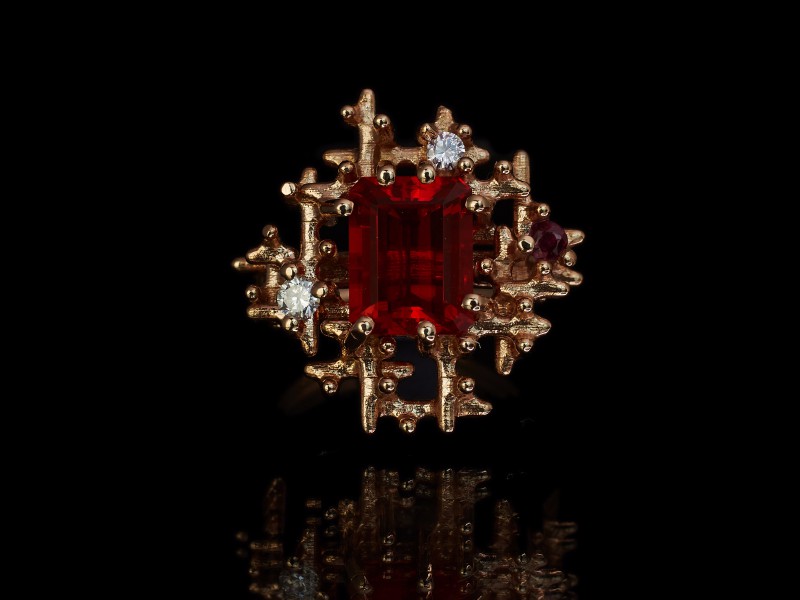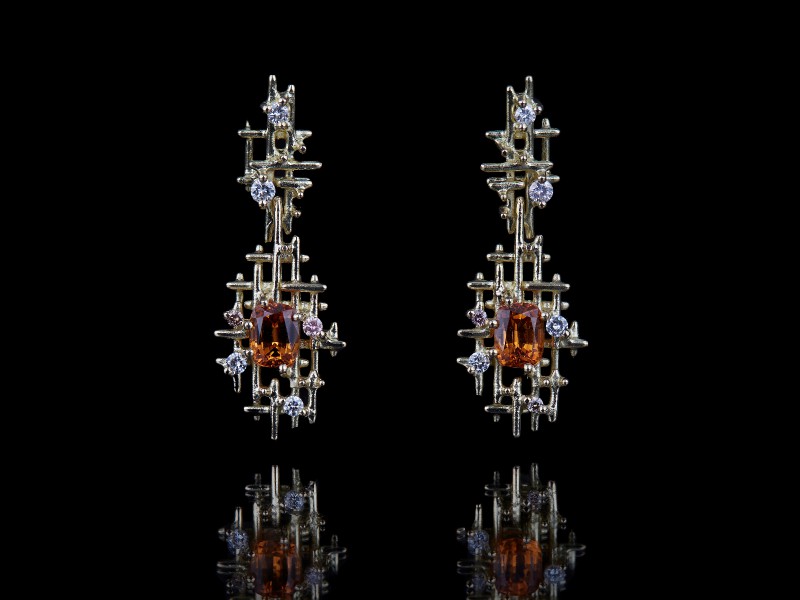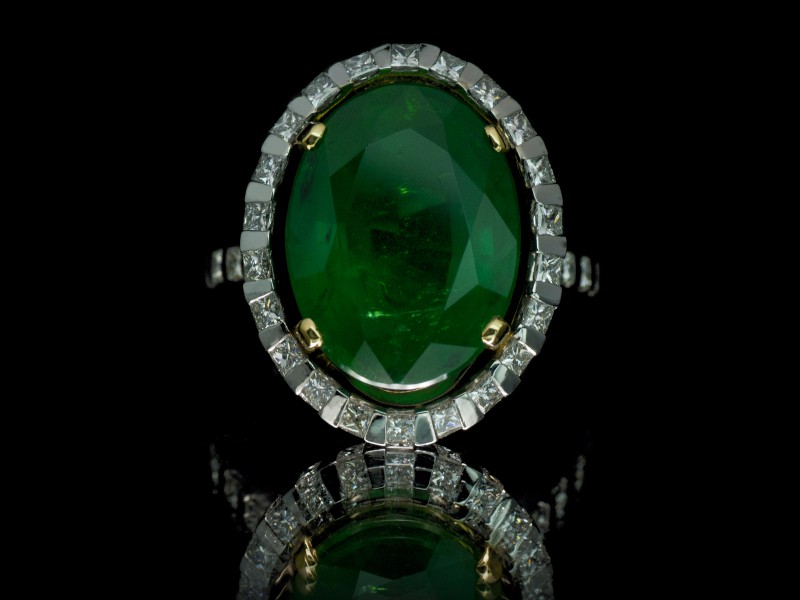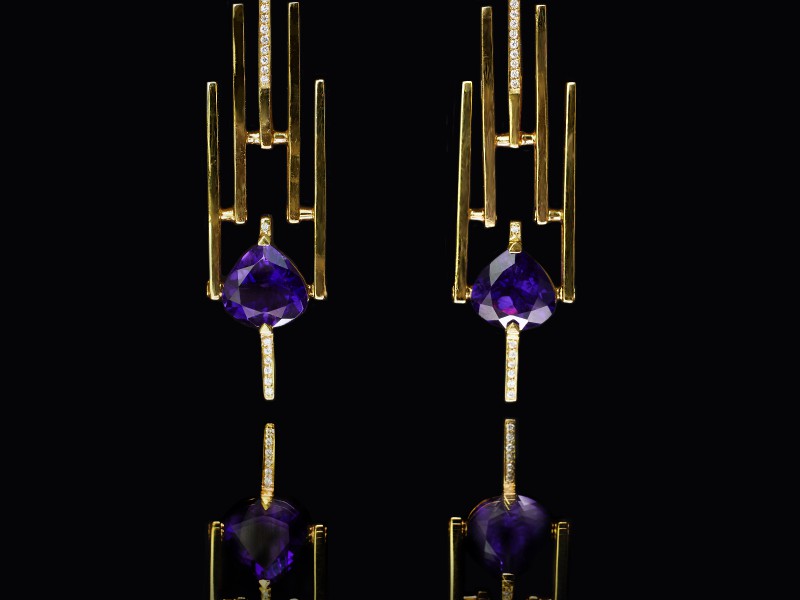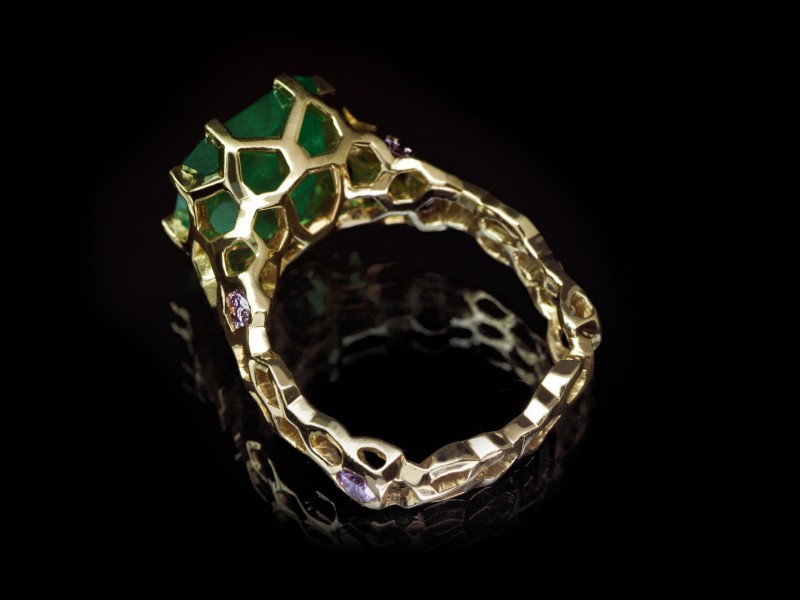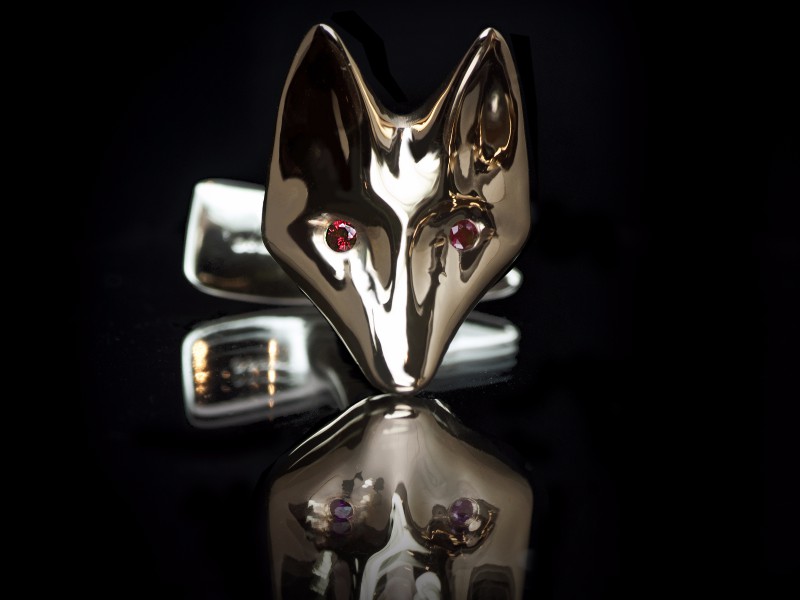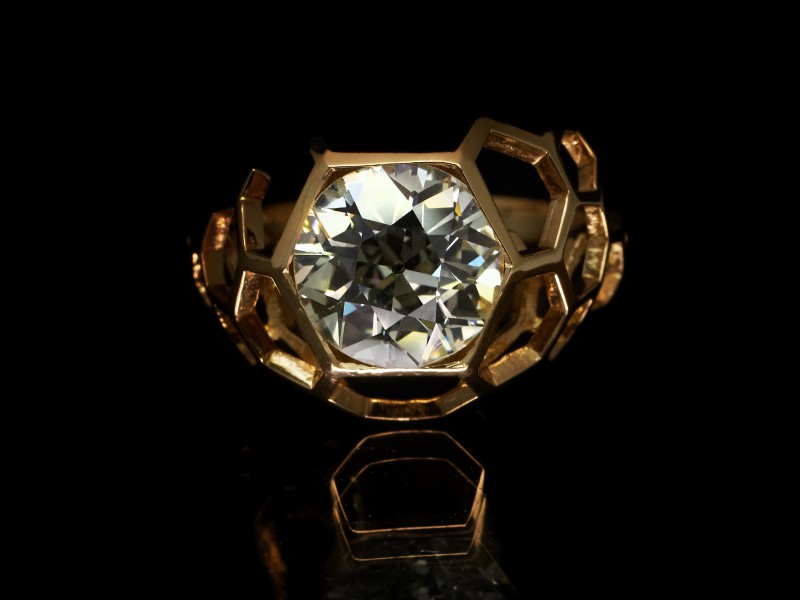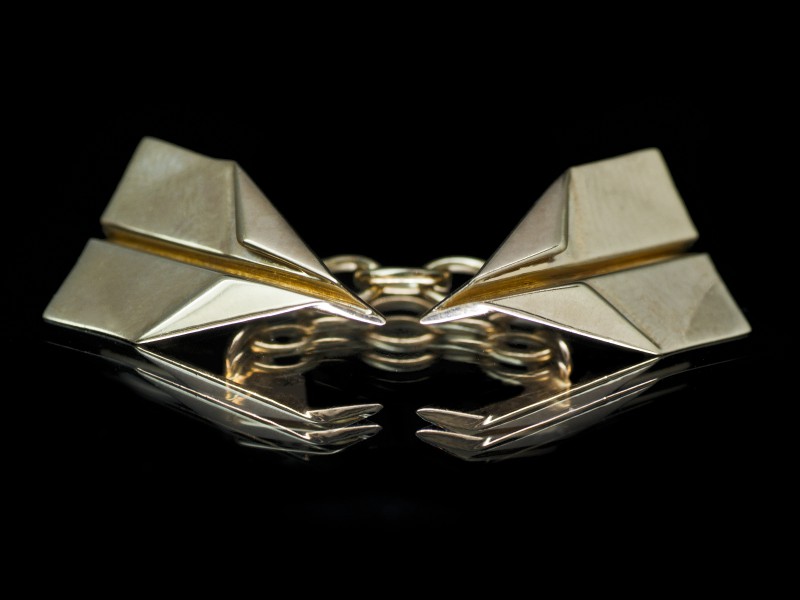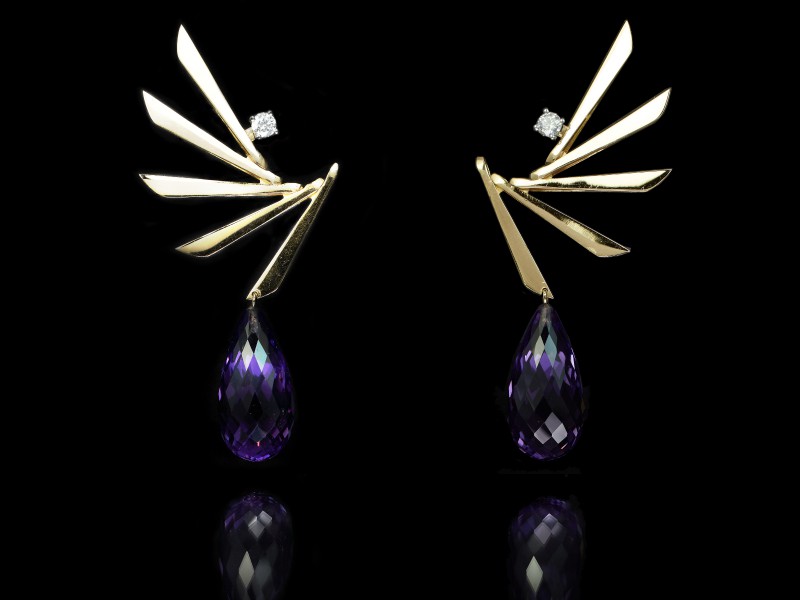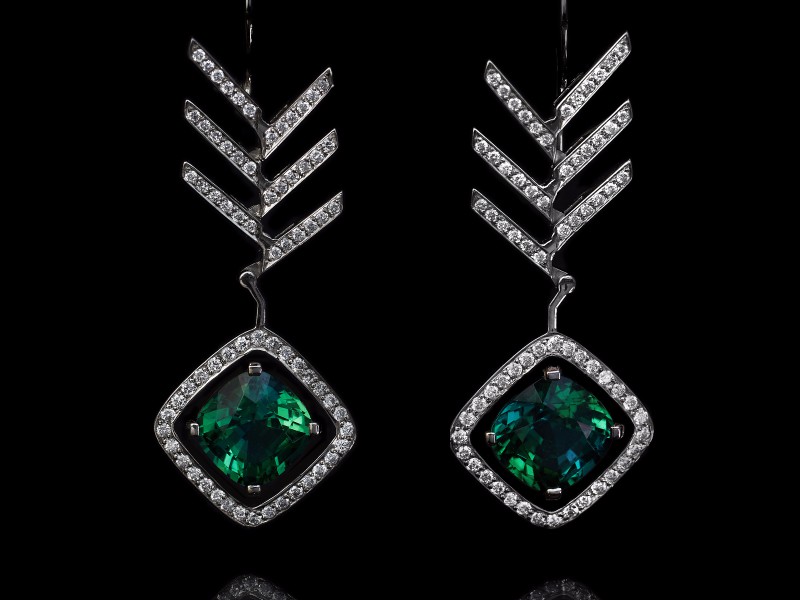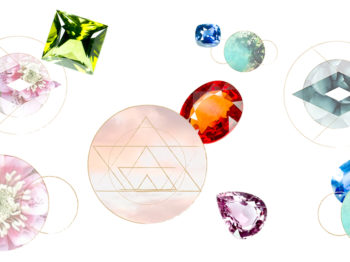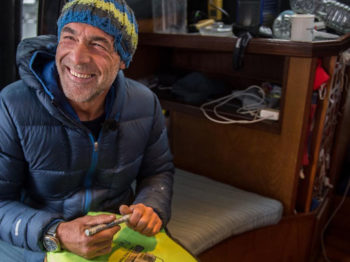Let’s talk to Guy and Max Shepherd and learn more about their take on 3D printing and understand how they can be so avant-garde in regards to the development of our century, while creating fine jewellery with a vintage flair.
All around us technological progresses abound. Be it in health and medical research, social media, home innovation and fashion, there is not a week that goes by without some progress that will change the way we travel, communicate or live. For one, the jewelry industry markets itself as a proponent of craftsmanship (some technical steps cannot be ‘machined’), and although CAD (computer aided drawing) has made inroads in most jewellers’ offices, it is also shunned by some traditionalists that advocate the sole use of ‘hand-made’ from start to finish. However now, one technology is heavily lurking around the corner and it could completely revolutionise jewellery making. It is 3D printing and since it offers limitless possibilities (one can 3D print in wax and metal, although the latter is still quite challenging and costly), could it be the holy grail? The Financial Times recently published an article titled ‘Jewellery makers seize on tech’s speed and ease’. Indeed thanks to 3D printing one can produce highly intricate designs that conventional moulds would not be able to achieve. In addition, a 3D file can be transmitted instantly to any computer anywhere in the world. In other words, it breaks all sorts of frontiers.
Meet Guy & Max the brothers who embarked upon 3D printing ahead of the curve (in 2005). In their boutique / salon located right in the lovely enclave that is Shepherd Market, on Shepherd Street, they welcome customers as in any elegant fine jewellery shop. Nothing upfront discloses their specificity, and this is exactly why the concept is so clever. 3D printing does not monopolise centre stage, it has just been introduced as a technique amongst other traditional ones. In addition, the fact that the family business has been in diamond dealing informs that 3D printing is not in this instance some new kids on the block’s fancy, but a well considered plan. At Guy & Max, 3D printing is a discreet game changer that does not define the precious jewels but rather enhances their potential.
Our London-based reporter and published author has met with the team and asked a few questions to learn about that new uprising trend.
Olivier Dupon – When did you decide to jump in the business?
Max – GUY&MAX was born from the family business, it was when I realized we could 3D print fine jewelry that things became really interesting to me. I am also a geek at heart, and we love to make things. These two things combined give me a passion to keep learning about processes new and old. I just hope my thought process is lateral enough to see opportunities that others can’t.
Guy – I had a very romantic view of our father and his work. I still have a school essay somewhere, when I was about ten years old, entitled “A Day in the Life of a Diamond Broker”. I never wanted to do anything else.
OD – Could you describe how you first got the idea of 3D printed fine jewelry?
M – I was looking at the concept of teleportation for a furniture show in 2004. I was hoping to scan a chair in London and print it at the show in Hong Kong. Due to the scale of a chair, the costs were beginning to escalate so we had to ditch the idea but, when Guy asked me to design a range of jewellery for his manufacturing company, we thought the costs could work in fine jewellery due to its size in relation to the material cost.
OD – Can you describe the process of how a GuY & MAX piece is made?
G and M – Each design is different, but generally we research and develop, in house for our own collections or with clients for bespoke items. Once the renders are approved, we 3D print them into resin and repeat this until perfection is achieved. We can then cast the precious metal from these models or, in more complicated examples, 3D print directly into metal. We then stick to more traditional artisan skills of cleaning up the metal, pre-polishing, hand setting and final polishing. We have to outsource very few skills such as engraving and enamelling. In our eyes a design can never be perfect; it evolves over time. The important thing is to know when to move on. Evolution of a design can occur over months even years for our own collections. Obviously bespoke pieces for customers don’t have this level of design but still can take excessive hours to create a 3D model.
OD – What are the boundaries in using that technology?
M – Very much so! Firstly the skill and years of training needed to master the software. I have been 3D modelling for 20 years and I still learn new things every day! It is easy to think that 3D printing has very few limitations because it seems limitless as to what can be done with it but there is a responsibility that comes with new technology. We are very careful not to abuse the technology to create pieces that would be better suited to other methods of production.
OD – How do you get inspired ?
M – I’m a strong believer that inspiration is derived from everything that surrounds us. However I consciously look towards modern exploration and science’s unanswered questions, nature’s origins, its building blocks and forces as inspiration to try to create a new aesthetic. Besides, Charles Darwin fascinates me. The theory of evolution is an amazing concept as yet to be disproved. I like the idea that art mimics nature and because of that our designs evolve too.
OD – What makes you who your are today?
M – I love to be challenged, am a perfectionist, am over competitive, and can be irritatingly stubborn (poor Guy) but it does mean I strive to create the best in everything I do even if it takes a little more time.
G – I adore meeting people. Chatting, story telling, joking, socializing, partying (poor Max) all come very naturally to me and it makes the celebration within our working environment very easy and comfortable for me and our patrons (I’m told!).
OD – Is there anything in your designs that make them quitessentially British?
M – They are made in the UK. Although our designs are unique and sculptural, we generally reinterpret classic ideas, like traditional eternity rings and cluster rings, and give them our own distinct and unique twist.
G – We are British and they are made in Britain. However, I don’t think that the designs are necessarily identifiable as British. It is a very local tradition to take ideas, skills, technologies and styles from around the world, adopt, develop and perfect them. Take the music trade for example; original ideas in rock’n’roll, punk and acid house might have been spawned in the USA but just look at the history of how we Brits ran with them?
OD – Any signature of yours we should bare in mind?
M – I feel I’m still very much learning, due to our heritage, we mainly use diamonds but I would hate to limit myself in that way. It is important that whatever we use it is responsibly sourced and we have very good connections in the trade for this. Each collection has its own signature and technique. For instance, Algorithm, as the name suggests uses a computer algorithm to form a 3 axis structure around gemstones, Digital Nature has a cellular structure influenced by microscopic photography while birdcage uses engineering principles to make very fine but strong structures.
Guy – I love the kaleidoscope of colours that have been presented since evolving from an exclusively diamond environment, although I still adore a bit of carbon!
OD – Do you see an evolution in your work since you have started fine jewelry 3D printing?
M – It’s constantly evolving but as I learn more digital tools, problems can be overcome giving me more and more flexibility to design what I have in my head. I think this has allowed me more storytelling through designs especially in digital nature, which highlights man’s symbiotic relationship with mother earth and our obsession with bio mimicry.
OD – How are you positioning yourself next to the other independant fine jewelers?
M – We are trying to do the opposite, be their nemesis if you will.
G – Our attitude to the historic trade was marred when the establishment initially dismissed our ideas and processes by shunning us from an important design competition. Ten years later they are all trying to do the same thing. F**k, s*d, to hell with them!
OD – Which one of your projects has given you the most satisfaction?
G – This type of question is nearly impossible to answer but a recent example springs to mind. A fan loved our “Digital Nature” design. He also loved (and still does) his wife. He also remembered when he proposed to her fifteen years ago that the symbolism of the moment was reflected in a shell they had picked up on the proposal beach. They had already made a sundial of it. He now wanted us to create a sculpture of our own in precious metal and diamonds. Photos never do jewellery justice but the nuances between the white gold with or without rhodium, with white diamonds, the striations of metal coupled with the energetic twist to their moment, made the piece both entirely personal to GUY&MAX and them. It took many months but he, like us, is a perfectionist and would have been disappointed picking a bejewelled shell off the counter in Barbados.
OD – What is your vision of fine jewelry 3D printing?
M – There’s no denying, fine jewellery is a difficult sector at the moment. The audience is shrinking and the number of jewellers is growing. In a world more obsessed by celebrity, true designers are struggling to stand out. We think it is necessary to try different models as luxury is in transitional period with little direction or leadership being offered by the bigger brands.
OD – Has anyone of your customer said anything that struck you?
G – I pen this not one hour from somebody leaving, having spoken of a dream, taking a quantum leap into our virtual reality with excessive doubts, but was blown away by the perfect truth. A truth that will bring the tears of joy and happy laughter that is commonplace at GUY&MAX everyday, for the rest of their lives.
OD – What is your main next ambition?
M – I have a few but would like firstly to spend more time experimenting and less time accounting.
G – Ha! Indeed. When can we leave finance and accounting to the non-artistic experts? I am a vocal export for my brother’s import. Watch this space for many other fascinating ideas and media (is that the Latin plural for mediums?). Who cares? C’mon everybody!

